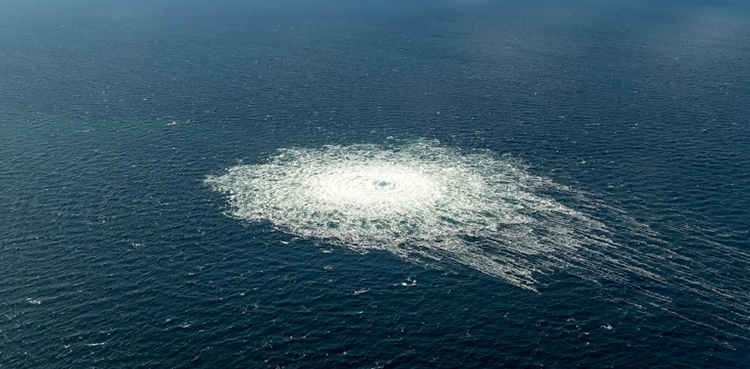
Nord Stream’s operator said Thursday it was unable to immediately assess damage to pipelines linking Russia to Europe, threatening an indeterminate outage — after Sweden detected a fourth leak and NATO decried “acts of sabotage”.
The Swedish Coast Guard confirmed Thursday there were four leaks in total on the pipeline in the Baltic Sea — two on the Swedish side and two on the Danish side. Three leaks were previously reported.
The Nord Stream 1 and 2 pipelines have been at the centre of geopolitical tensions as Russia cut gas supplies to Europe in suspected retaliation against Western sanctions following Moscow’s invasion of Ukraine.
Nord Stream’s operator said it “intends to start assessing the damage to the pipeline as soon as it receives necessary official permits”.
It said access could be allowed “only after the pressure in the gas pipeline has stabilised and the gas leakage has stopped”.
“Until the completion of the damage assessment, it is not possible to predict the timeframe for restoration of the gas transmission infrastructure”, the operator said.
NATO declared the damage was “the result of deliberate, reckless and irresponsible acts of sabotage” and said it supported investigations to determine the origin of the damage.
The Western alliance warned it was “committed to prepare for, deter and defend against the coercive use of energy and other hybrid tactics”.
“Any deliberate attack against Allies’ critical infrastructure would be met with a united and determined response,” it said, adding that the leaks present risks to shipping and would cause substantial environmental damage.
Russia has denied it was behind the explosions and said a foreign state was likely responsible.
President Vladimir Putin blamed the leaks on “international terrorism”.
He described them as “unprecedented sabotage” in a phone call with Turkish leader Recep Tayyip Erdogan on Thursday, according to a Kremlin readout.
Russia’s security service has also launched an “international terrorism” investigation into the gas leaks, saying it had caused “significant economic damage to the Russian Federation”.
Russia said Wednesday that Washington should answer if it was behind the leaks — an assertion rejected by the United States as “ridiculous”.
The UN Security Council will meet Friday to discuss the matter.
Finland, which borders Russia, moved to reinforce security around its critical infrastructure, with particular focus on the electricity network.
Sweden’s two main nuclear power plants stepped up their alert levels.
– ‘Constant’ gas flow –
Operated by a consortium majority-owned by Russian gas giant Gazprom, Nord Stream 1 and 2 run from Russia to Germany.
While the pipelines are not currently in operation, they both still contained gas.
The vast leaks have caused underwater gas plumes, with significant bubbling at the surface of the sea several hundred metres wide, making it impossible to immediately inspect the structures.
Seismic institutes on Tuesday reported they had recorded “in all likelihood” explosions in the area, prior to the leaks being detected.
A Swedish Coast Guard search and rescue vessel was patrolling the area.
“The crew reports that the flow of gas visible on the surface is constant,” the agency said in a statement.
Danish authorities said the leaks will continue until the gas in the pipelines is exhausted, which is expected to occur on Sunday.
Fatih Birol, executive director of the International Energy Agency, said at a symposium in Paris that to him it was “very obvious” who was behind the leaks.
He said natural gas shortages in the wake of the war in Ukraine could make for a tough winter in Europe.
“In the absence of a major negative surprise, I think Europe, in terms of natural gas, can survive this winter with a lot of bruises in our bodies in terms of prices, economy and social issues, but we can go through that,” Birol said.
According to climate groups, Nord Stream 1 and 2 contained some 350,000 tonnes of natural gas — methane.
Greenpeace says the leaks could have the effect of almost 30 million tonnes of CO2, or more than two-thirds of the annual emissions of Denmark.
from ARY NEWS https://ift.tt/VRLDxYS
via IFTTT


